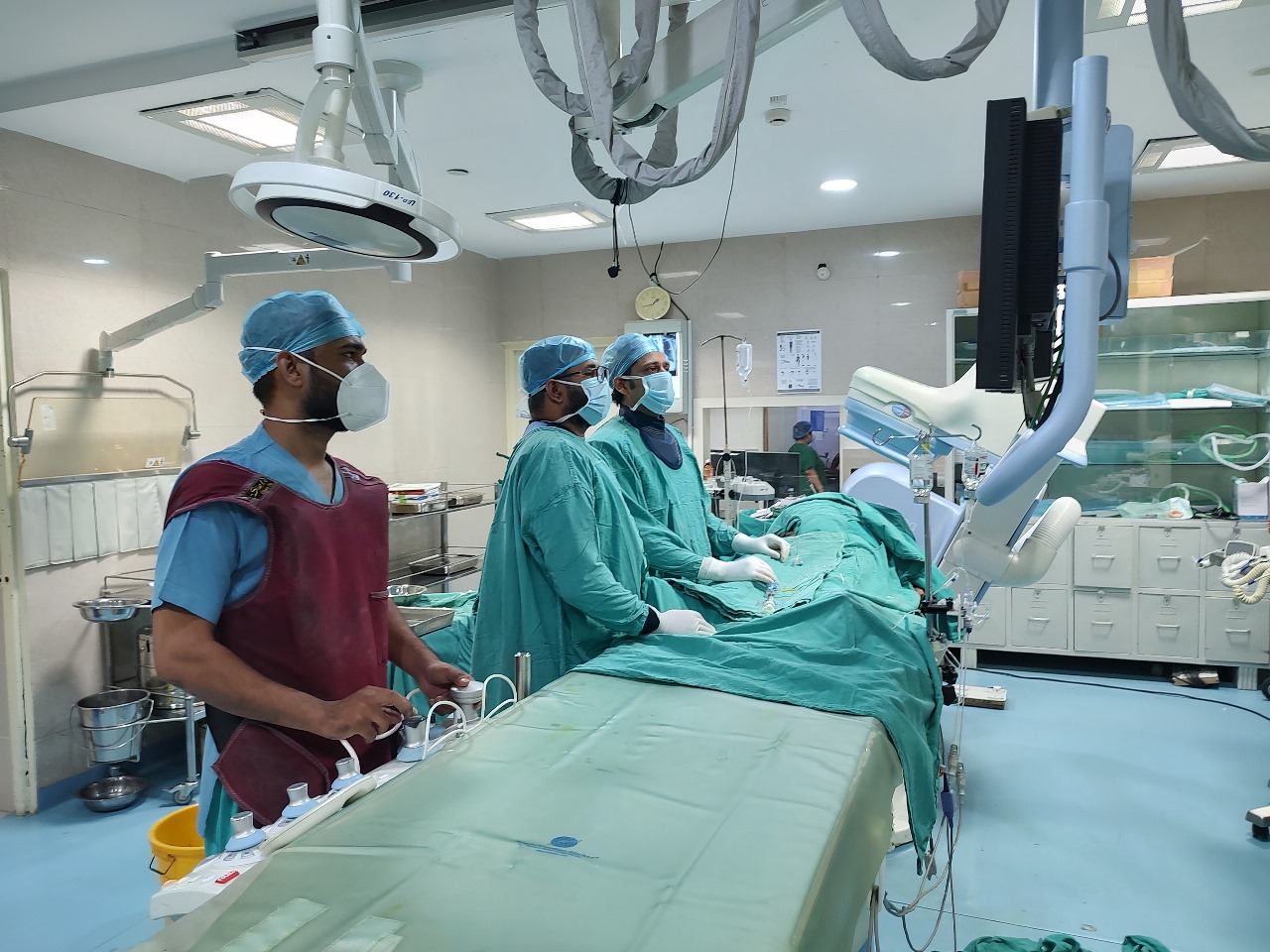CNN Central News & Network–ITDC India Epress/ITDC News Bhopal: Doctors at Bhopal Memorial Hospital & Research Centre (BMHRC) successfully performed the procedure of minimally invasive radiofrequency ablation (RFA) on a 48-year-old gas victim female patient, suffering from abnormal heart rhythm, a condition where there is a disturbance in the normal electrical activation of the heart. The woman is now completely stable and discharged from the hospital.
Dr Ashish Shankhdhar, Assistant Professor, Department of Cardiology, BMHRC, said that there is electrical activity in the heart that controls the speed of the heartbeat. Normally, these electrical signals follow a fixed path, but some tissues can cause an additional electrical connection between the upper and lower chambers of the heart which makes the heart beat faster. This is called Atrioventricular reciprocating tachycardia (AVRT) or Atrioventricular nodal reentrant tachycardia (AVNRT). many patients come to the cardiologist with such problems. The doctors give them medication that gives them relief, but the disease does not go away completely. For this, radiofrequency ablation is required. This minimally invasive procedure is much effective than treating the condition through medications. “In this particular case, ECG reports of this patient showed irregular heart rhythms and we treated her with RFA,” he added.
Dr Aman Chaturvedi, Assistant Professor, Department of Cardiology, BMHRC, said that abnormal increase in the heart rate is very common among people. Out of 1000 people, around 3 to 4 patients are suffering from AVRT & AVNRT. Usually this disease is genetic but sometimes this problem can occur due to some other reasons too. “So far two patients have been treated with this technique and both have recovered from the disease, he added. For RFA, Electro physiology study is required
Treatment with radiofrequency ablation is the permanent solution of AVRT & AVNRT . For this an Electro physiology (EP) study is required, in which a thin tubes called catheters are placed in three or more heart areas. The cardiologists inserts the tubes into a blood vessel. The doctor guides the tubes to the heart. Sensors on the tips of the catheters send electrical signals to the heart and record the heart’s electrical activity. With Cardiac ablation, heat or cold energy applies to create tiny scars in the heart. The scars block faulty heart signals and restore a typical heartbeat.
The problem of AVRT and AVNRT is seen in many people but very few hospitals treated these diseases through radio frequency ablation. It is a matter of happiness that BMHRC is able to provide this facility to the patients.
Dr. Manisha Shrivastava, Director In-charge, BMHRC, Bhopal







